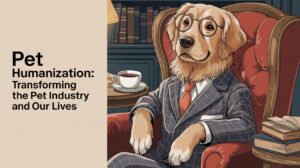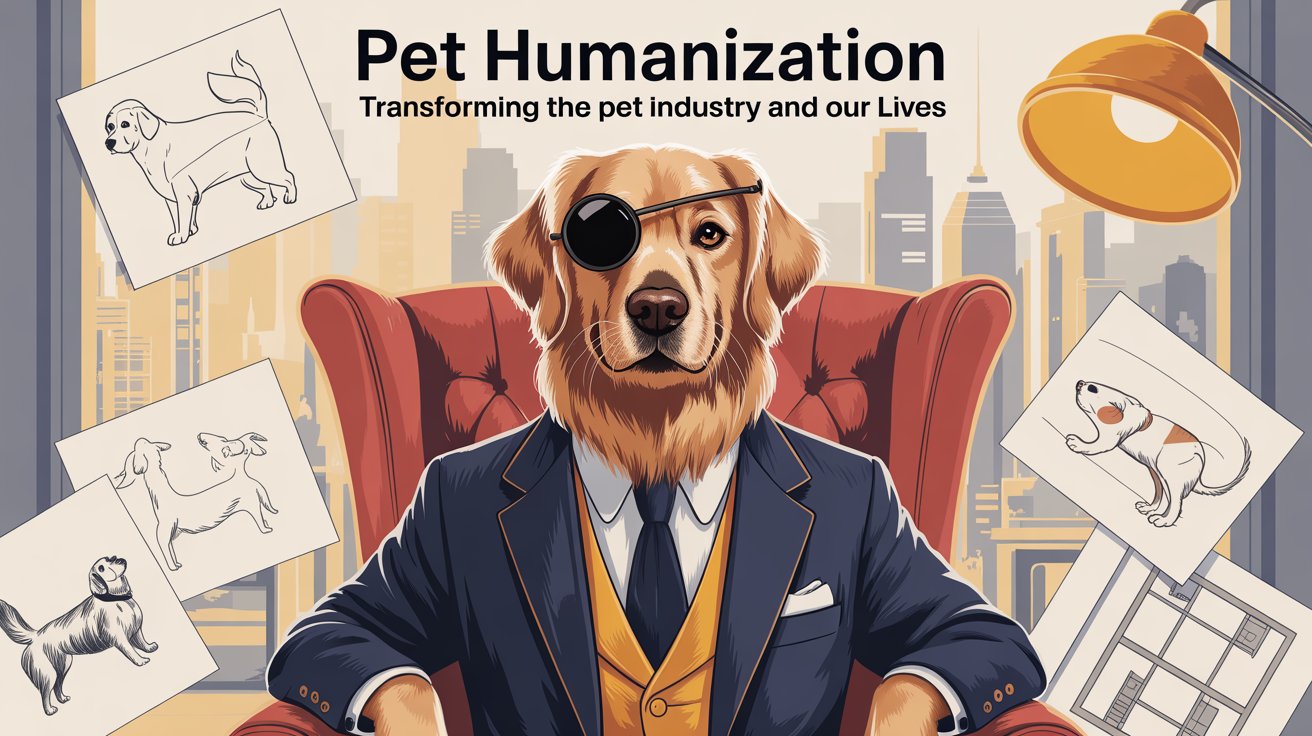Pet humanization has developed into a major social trend within the last few years. Modern pet care follows a paradigm shift that recognizes family status for animals at the same level as human household members. These customer mindset shifts have generated major transformations across the pet industry that affect product variations as well as promotional strategies.
Understanding Pet Humanization

Pet humanization describes the process where people give their pets human qualities that leads to better care with heightened emotional involvement. Pet owners actively look for human-style products across the board including both premium food and upscale lodgings.
Human-Grade pet food has gained immense popularity during this time period
Pet humanization drives the increasing market demand for Foods that meet the same quality criteria as human diets. Owners of pets prefer food items which conform to human regulatory standards because they focus on delivering high-quality nutrition. Brands focused on preparing minimally processed and fresh pet meals experience increasing consumer demand.
Business Insider
People Dog Food: Blurring the Lines
The dietary shift toward human-style pet food finds expression in the term people dog food. The approach selects premium ingredients following pet owner dietary choices. Through this approach pets receive nourishing food while experiencing a wide range of tasteful and nutritious diet options.
Future Market Insights
Impact on the Pet Industry
Through pet humanization businesses have experienced a major market impact which drives them to create newer and diverse products. Businesses offer various products alongside different services today including:
- Premium Pet Food: Manufacturers prioritize three types of pet food – organic and grain-free with human-grade ingredients.
- Pet Apparel and Accessories: Businesses have prepared fashionable pet apparel as well as customized accessories to suit pets.
- Pet-Friendly Travel: Travel accommodations along with pet-oriented services that travel operators need to provide.
- Wellness Services: The industry now provides special spa services and fitness programs and diverse mental stimulation activities.
- The industry’s developments reveal its new direction toward meeting modern pet owner expectations.
Emotional Bonds and Behavioral Changes
The establishment of stronger emotional attachments between owners and pets has brought about serious behavioral alterations. Many dog owners today view their pets similarly to children which drives the way they buy products and organize their day. Pet owners develop such strong emotional connections with their pets that they start prioritizing their pet needs higher than their personal needs.
Challenges and Considerations

The many advantages that result from pet humanization create difficulties for several aspects as follows:
- Nutritional Balance: The process of ensuring that human-grade food satisfies the particular dietary requirements of animals.
- Cost Implications: Premium products together with high-end services may cost substantial amounts of money for consumers.
- Over-Humanization: The tendency to ascribe too many human characteristics to pets could result in missed opportunities for understanding their individual set of behaviors and requirements.
Combining empathy with educated decision-making formats the proper solution for tackling these difficulties.
The Future of Pet Humanization
Pet humanization shows signs of developing both qualitatively and quantitatively. Emerging trends include:
- Technological Integration: Pet owners use digital devices like wearable tech and smartphone applications to track how their pets are doing.
- Customized Nutrition: Custom-made diets will emerge from studying Genes and health data of pets.
- Mental Health Focus: Pet psychology-focused services provide support for the mental health of pets.
The Australian
+8
WSJ
+8
Barron’s
+8
Pet life quality enhancement continues to receive ongoing support which matches the expectations of contemporary pet owners.
pets presently reside at a central position in human-animal relations because of the rise of humanization practices. Our household pets now occupy central roles above their former roles as companions. Or working animals as we care for them with similar love and attention as we would for our children. Animal attachment increased emotions drive changing consumer actions and drives industrial changes as well as shaping public perceptions about animal care.
Our growing interest in the health and lifespan of pets can be seen in the expanding demand for people dog food as well as human-grade pet nutrition products. Specialty diets and mental health support strategies aim at achieving pet health. And wellness which matches how we develop our personal wellness standards. People today operate with enhanced education level which translates to their status. As choosy consumers who expect complete clarity and product superiority from manufacturers of pet supplies.

The trend needs to maintain equilibrium as it evolves further. The benefits of human-like care extend to pets but they need particular species-oriented care along with it. Excessive humanization of pets might trigger undesirable health conditions and behavioral problems or cause stress.
Dog humanization patterns will impact the sectors of pet healthcare and workplace policies and pet insurance and pet technology development over the following years. Modern society is heading towards a complete integration of pets throughout all aspects of life. Responsible adoption of the pet humanization trend ensures pets experience both creature comfort and their emotional wellbeing and physical safety.
1. What is pet humanization?
Pet humanization is the trend of treating pets like human family members, influencing their diet, care, and lifestyle.
2. Why is pet humanization becoming popular?
More people see pets as emotional companions, which increases demand for premium food, healthcare, and comfort items.
3. What is people dog food?
People dog food refers to pet food made with human-grade ingredients, often resembling meals people would eat.
4. Is human-grade food safe for pets?
Yes, human-grade pet food is generally safe and nutritious when properly formulated for a pet’s dietary needs.
5. How does pet humanization impact the pet food industry?
It drives innovation in healthy, organic, and gourmet pet food options, especially in the premium product category.
6. Are there risks to over-humanizing pets?
Yes, over-humanizing can ignore species-specific needs, potentially causing health or behavioral issues in pets.
7. What are examples of human-grade pet foods?
Brands like The Farmer’s Dog, Ollie, and Nom Nom offer fresh, minimally processed, human-grade dog meals.
8. Will pet humanization continue growing?
Yes, the trend is expected to grow with increased demand for tech-enabled care, custom diets, and wellness services.
